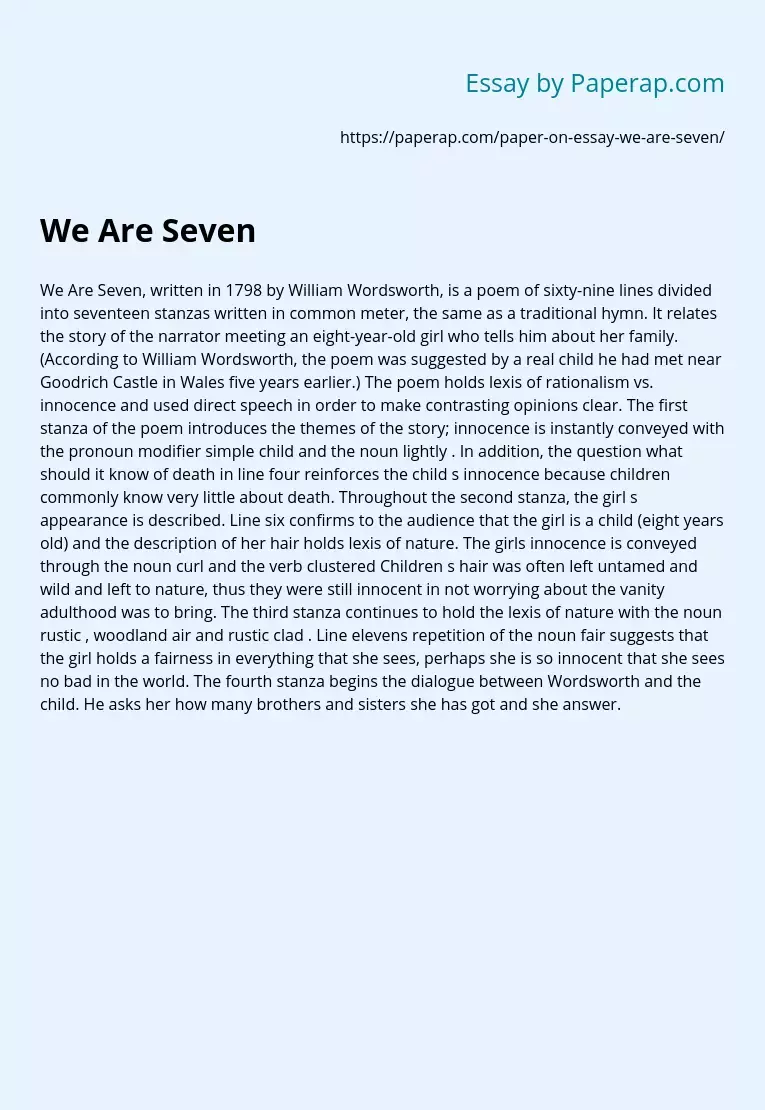We Are Seven by William Wordsworth
We Are Seven, written in 1798 by William Wordsworth, is a poem of sixty-nine lines divided into seventeen stanzas written in common meter, the same as a traditional hymn. It relates the story of the narrator meeting an eight-year-old girl who tells him about her family. (According to William Wordsworth, the poem was suggested by a real child he had met near Goodrich Castle in Wales five years earlier.) The poem holds lexis of rationalism vs. innocence and used direct speech in order to make contrasting opinions clear.
The first stanza of the poem introduces the themes of the story; innocence is instantly conveyed with the pronoun modifier simple child and the noun lightly . In addition, the question what should it know of death in line four reinforces the child s innocence because children commonly know very little about death.
Throughout the second stanza, the girl s appearance is described. Line six confirms to the audience that the girl is a child (eight years old) and the description of her hair holds lexis of nature.
The girls innocence is conveyed through the noun curl and the verb clustered Children s hair was often left untamed and wild and left to nature, thus they were still innocent in not worrying about the vanity adulthood was to bring.
The third stanza continues to hold the lexis of nature with the noun rustic , woodland air and rustic clad . Line elevens repetition of the noun fair suggests that the girl holds a fairness in everything that she sees, perhaps she is so innocent that she sees no bad in the world.
The fourth stanza begins the dialogue between Wordsworth and the child. He asks her how many brothers and sisters she has got and she answer.
We Are Seven by William Wordsworth. (2019, Jun 20). Retrieved from https://paperap.com/paper-on-essay-we-are-seven/

